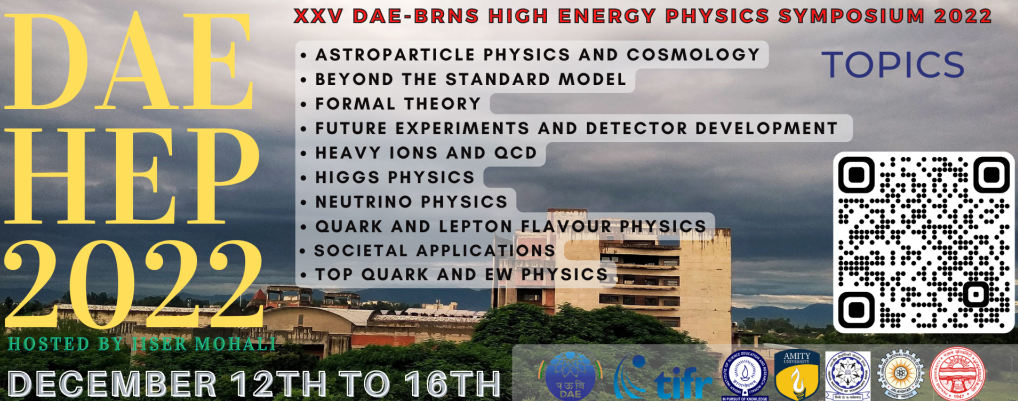Speaker
Description
Quantum chromodynamics (QCD) is the theory of strong interaction between quarks mediated by gluons. QCD predicts that pairs or triplets of quark and antiquark can bind together, forming the hadrons. In QCD, the gluons interact not only with the quarks but also among themselves since they carry the color charge that characterizes the strong interaction. This fact allows Lattice QCD to predict the existence of particles composed of gluons only. The lightest glueball is expected in a mass range of \mbox{1550--1750 MeV/$c^{2}$} having total angular momentum (J), parity (P) and charge conjugate (C) J$^{\mathrm{PC}}= 0^{++}$. Possible states with J$^{\mathrm{PC}}= 0^{++}$, and isospin I $=$0 are $f_\mathrm{0}(980)$, $f_\mathrm{0}(1370)$, $f_\mathrm{0}(1500)$ and $f_\mathrm{0}(1710)$. The $f_\mathrm{0}(1710)$ is a suitable candidate for glueball as it falls in the mass range of the Lattice QCD predictions. The large statistics data sample collected by ALICE in pp collisions at the highest LHC centre-of- mass energy provides an opportunity to search for high mass resonances, whose characteristics and internal structure are still unknown.
We report on the measurements of invariant mass distributions at midrapidity of higher mass resonances using the decay K$^{0}_\mathrm{S}\mathrm{K}^{0}_\mathrm{S}$ and K$^{+}$K$^{-}$ channels, collected by the ALICE detector in pp collisions at $\sqrt{s}$ = 13 TeV.
| Session | Heavy Ions and QCD |
|---|
